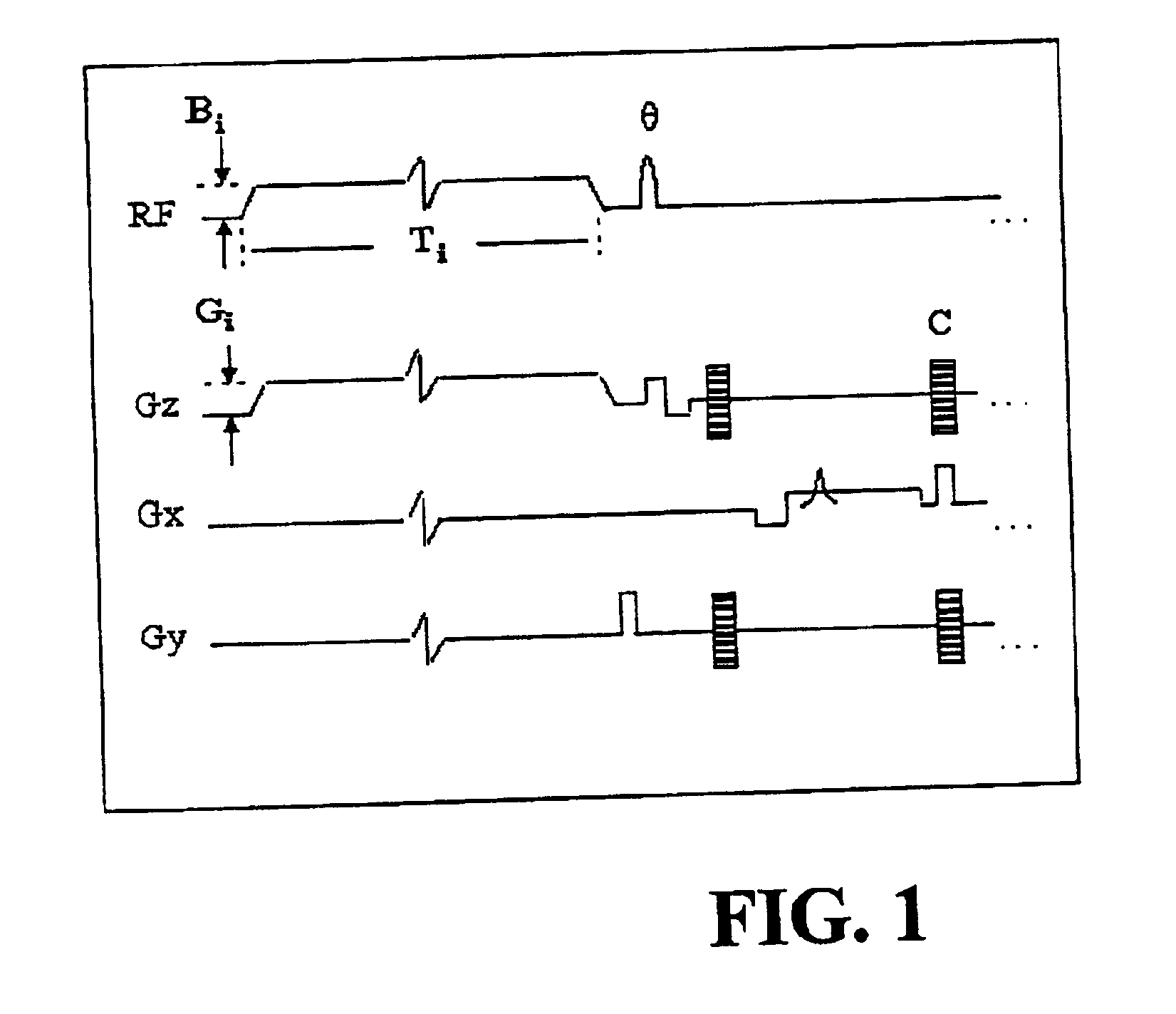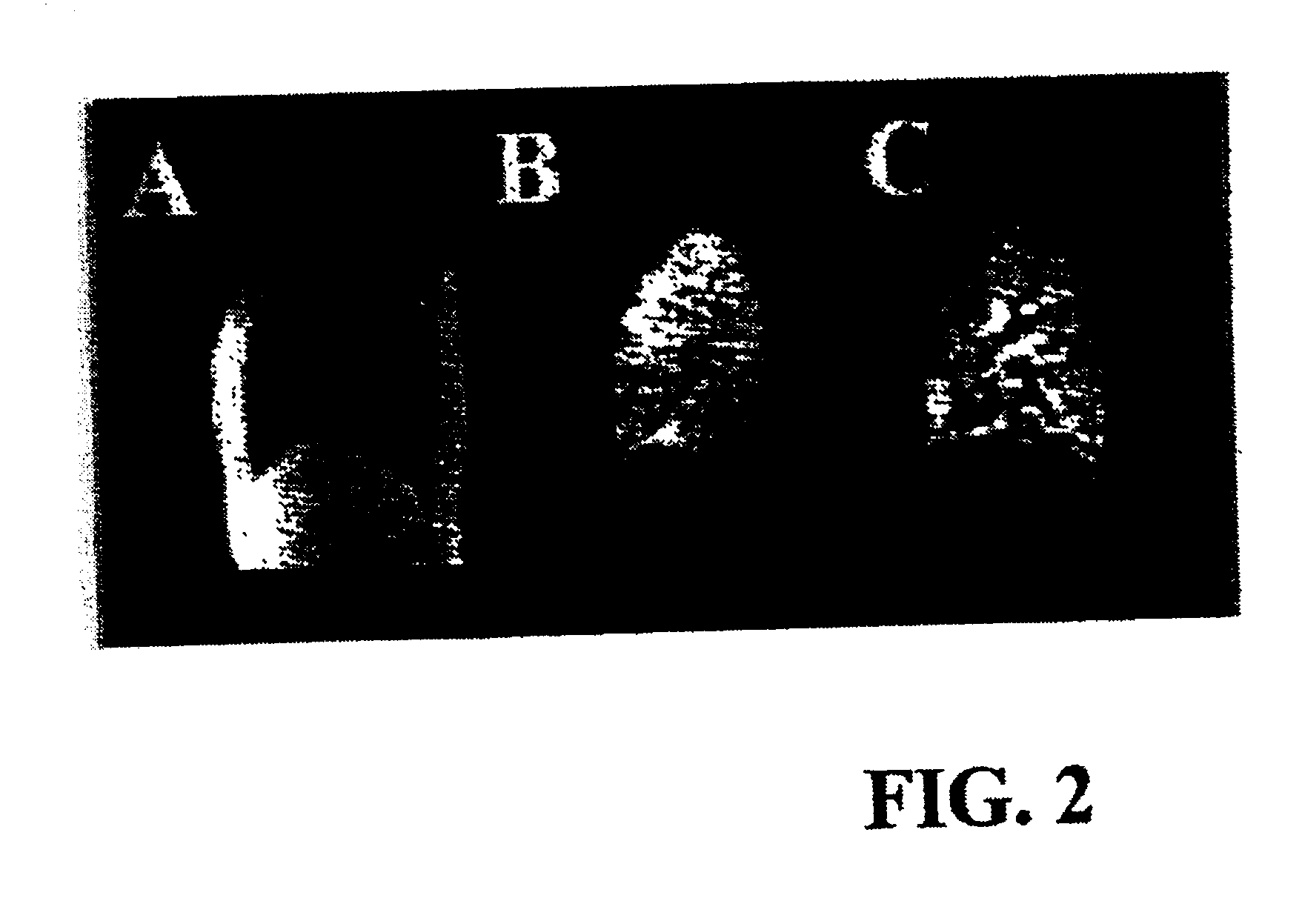Quantitative pulmonary imaging
a pulmonary imaging and quantitative technology, applied in the field of noninvasive methods, can solve the problems of limited spatial resolution, clinically significant limitations, and well-documented existing techniques, and achieve the effects of reducing the number of patients with advanced emphysema, and reducing the number of patients
- Summary
- Abstract
- Description
- Claims
- Application Information
AI Technical Summary
Benefits of technology
Problems solved by technology
Method used
Image
Examples
examples
[0075]To confirm the effectiveness of the disclosed method, experiments were performed after informed consent was obtained from the patients using a medically approved protocol. Six patients were imaged. Three normal subjects, two patients with advanced emphysema, and one woman with a pulmonary embolus (PE), documented by history and V / Q scan, were selected to undergo magnetic resonance imaging. The two emphysema patients had each previously undergone single orthotopic lung transplantation (6 months and 5 years prior to imaging). Neither transplant patient had a baseline oxygen requirement, and both were free of respiratory symptoms at the time of imaging. Single lung transplant patients were chosen so that a direct comparison could be made between a severely obstructed and a relatively normal lung in the same patient. In all of the patients, chest radiographs showed no infiltrates or other active disease. The patient with PE was receiving intravenous heparin at the time of imaging....
PUM
 Login to View More
Login to View More Abstract
Description
Claims
Application Information
 Login to View More
Login to View More - R&D
- Intellectual Property
- Life Sciences
- Materials
- Tech Scout
- Unparalleled Data Quality
- Higher Quality Content
- 60% Fewer Hallucinations
Browse by: Latest US Patents, China's latest patents, Technical Efficacy Thesaurus, Application Domain, Technology Topic, Popular Technical Reports.
© 2025 PatSnap. All rights reserved.Legal|Privacy policy|Modern Slavery Act Transparency Statement|Sitemap|About US| Contact US: help@patsnap.com



